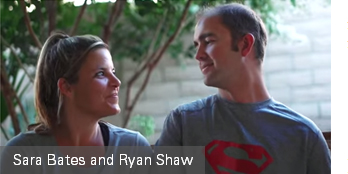.jpg)

Dear Members:
A couple of weeks ago I went fishing with two close friends in the Pacific Northwest. On my friend’s 51-foot Navigator Long Range Cruiser, we powered through the San Juan Islands hoping to catch a large halibut on the edge of an underwater plateau called Middle Bank, located at the junction of Haro Strait and the Strait of Juan de Fuca. The weather was perfect.
We didn’t catch any halibut on our trip, but we did manage to bring in several rockfish and a lingcod. The frosting on the cake was a catch of more than 30 dungeness crabs. Needless to say, the experience was phenomenal.
While we were drift fishing on Middle Bank, I couldn’t help reflecting on many of the wonderful experiences I’ve had since I was treated with proton therapy at Loma Linda University Cancer Center 15 years ago. These include boating around Cape Cod and Nantucket; taking a riverboat cruise with my wife and friends up the Danube River from Budapest to Passau, Germany; sailing the Mediterranean with friends and visiting ports in Greece, Montenegro, Croatia, and Italy. One day, we rented a car and drove up the Apennine Mountains in northern Italy to the tiny village of Agrimonte in Parma where I reconnected with relatives with whom my family had lost contact.
Perhaps the most significant experience in the past 15 years was watching my daughter Deb and her husband Mark walk off the jet way at Boston’s Logan Airport four years ago with their newly adopted infant, and our first grandchild, Gemma Hickey. What a gift she has been to our family!
These are just some of the many wonderful things I’ve been able to experience thanks to
a treatment for prostate cancer that left me with essentially zero side effects. To list all the things my treatment has allowed me to do over the past 15 years would take an entire newsletter (or two).
My story is not unique. Deb and I hear from members every day who relate their positive experiences living their lives after proton.
When I was diagnosed with prostate cancer in August 2000, there was only one proton treatment center in the U.S. Today there are 15 with several more on the way. One city now has two proton centers and several states will soon have multiple centers.
Considerable research is under way to reduce the capital investment to build a proton center, and important clinical trials are under way at several centers to dramatically reduce the cost of treatment. Prestigious medical centers around the world are acknowledging the superiority of using protons for treating brain tumors, spinal tumors, ocular tumors, pediatric cancers, and prostate cancer because of the significant benefits resulting from spared healthy tissue around the target volume.
The future is shaping up to be very good for proton therapy and, more important, for tens of thousands of patients who will benefit from this extraordinary technology.
Our June BOB Tales is packed with information about new developments in proton therapy, important health tips and some interesting and entertaining things as well.
As always, we welcome your feedback and suggestions for future newsletters. Just send an email to [email protected].
Bob Marckini
To print the BOB Tales newsletter or view the newsletter with a larger font size, click here for the PDF file.
Membership:
We have more than 7,500 members from all U.S. states and 39 countries. Members represent all operating proton centers in the U.S. as well as four proton centers in Europe and Asia.
In this Issue:
- Study shows proton superior to IMRT in treating cervical cancer
- NAPT: Oregon’s proposed coverage guidance ignores clinical evidence
- Study: Walking improves health outcomes for prostate cancer survivors
- Proton now in “big leagues”
- 29 proton centers in U.S. by 2018?
- Swap your diet; swap your cancer risk
- Cancer-fighting seasonings
- Tips for summer travel
Study Shows Proton is Superior to IMRT in Treating Cervical Cancer
Patients with locally advanced cervical cancer were treated with either IMRT or proton therapy. The most advanced forms of each therapy were used: helical tomotherapy and RapidArc for IMRT, and intensity modulated proton therapy (IMPT) for the proton group.
The study was published in the journal Radiation Oncology on April 17, 2015. All techniques were shown to provide excellent target volume coverage, homogeneity and conformity.
However, the study also showed that the mean dose bath to the small bowel was 38-50 percent lower on those receiving proton. And the low dose bath to the small bowel was 50 percent lower for the proton patients. The bladder and rectum also saw much lower radiation levels for the proton group. The study concluded:
All modern techniques were proved to be dosimetrically adequate regarding coverage, conformity and homogeneity of the target. Protons offered the best sparing of small bowel and rectum and therefore could contribute to a significant reduction of acute and late toxicity in cervical cancer treatment.
The precision of the proton beam to hit the target, while significantly reducing radiation to surrounding healthy tissue is clearly shown by this study. Less radiation to healthy tissue may result in fewer side effects and lower chances of secondary cancers later in life.
NAPT: Oregon’s Proposed Coverage Guidance Ignores Clinical Evidence
Last month we reported the Health Evidence Review Commission (HERC) in the state of Oregon posted a draft policy that recommends against coverage for proton therapy for treating a wide range of tumors, including brain, spinal, pediatric, head, neck, esophagus, liver, lung, and prostate cancers.
If the draft becomes policy, public and private payors throughout the state of Oregon will use the HERC guidelines in their coverage decisions. The National Association for Proton Therapy (NAPT) called this an “unprecedented decision with grave implications for residents of the state
of Oregon who receive a cancer diagnosis.”
NAPT further stated, “The proton beam therapy community, including the National Association for Proton Therapy, is alarmed by the HERC guidance which claims to be based on evidence, but fails to take into account hundreds of peer reviewed studies which demonstrate the value of proton therapy and contradicts numerous policies by national provider organizations. The Oregon guidance is inconsistent with many coverage policies from Medicare contractors and private payors.”
Dr. Ramesh Rengan, Associate Professor, Department of Radiation Oncology, University of Washington School of Medicine and Medical Director, SCCA Proton Therapy Center, Seattle, said, “In an era where clinical trials utilizing new therapies are yielding unprecedented breakthroughs in the treatment of cancer, the Oregon HERC’s draft recommendations on proton therapy, if adopted, would be
a significant step backwards in the advancement of cancer care.”
Tyler Wilson, Executive Director of NAPT said, “While the entire document seems completely out of sync with the consensus in the scientific community around PBT, the most surprising and disheartening aspect is the lack of coverage for pediatric patients. This is inconsistent with the current state of evidence and is so very harmful to a population of patients who would most benefit from the reduced amount
of radiation delivered in the course of PBT treatment.”
NAPT has urged Oregon HERC to reconsider and withdraw its draft coverage policy.
Study: Walking Improves Health Outcomes for Prostate Cancer Survivors
In an attempt to determine which types of exercises proved most helpful to prostate cancer survivors, doctors at Northwestern University Feinberg School of Medicine examined the relationship between walking and improved health outcomes. The study was published in the Journal of Cancer Survivorship and reported in UPI.com Health/News.
.jpg)
Researchers at the Harvard T.H. Chan School of Public Health followed more than 50,000 men in the healthcare industry. They examined exercise routines, diets, smoking habits, and more. Participants in the study filled out regular questionnaires reporting data on urinary and bowel problems, sexual function, fatigue, depression, body weight, etc. They also charted and categorized cardio-related activities, such as jogging, running, cycling, and swimming. They focused on the amount of time the men spent walking each week, and labeled their walking pace as easy, average, brisk or very brisk.
After analyzing the data, researchers concluded that men were more likely to have an improved health-related quality of life if they walked at a casual pace for at least three hours each week. However, the walking benefited only hormone-related symptoms like fatigue, depression and body weight. Walking was not shown to impact bowel, urinary or sexual functioning.
“This study shows that you don’t have to engage in high-impact, vigorous activities to improve your quality of life after a prostate cancer diagnosis,” said the lead study author. “Since many prostate cancer survivors might find vigorous activities hard to stick with, the good news is that simply focusing on walking more may be enough to make them feel better.”
Proton Now in the “Big Leagues”
Example 1:
We can now rest easy, knowing that proton has finally made it into the big leagues. Earlier this month the number one game show on television, Jeopardy, showed a photo of a cyclotron, and Alex Trebec provided the following answer:
“From 1947 to 2002, this control console was at the Harvard cyclotron lab for pioneering research now used to treat cancer. The surrounding healthy tissue is relatively undamaged, but the cancer cells are destroyed by irradiation with these positive particles.”
And the question, given by contestant Julio, was, “What are protons?” Julio must be a BOB member.
Example 2:
Julie Kramer, a cancer patient treated at the University of Pennsylvania was on the Ellen Degeneres Show. She had just completed proton treatment; she was full of energy and she looked great. Ellen even helped Julie fulfill one of her dreams—throwing out the first pitch at a Philadelphia Phillies game.
Isn’t it interesting that people named Julie and Julio mentioned protons on television last month?

Pacific Northwest BOB Reunion and Golf Event, Newberg, Oregon
When: Thursday, June 11, 2015 | Golf first tee time: 10:00 a.m. | Dinner & Reunion: Doors open at 5:30 p.m. (Dinner at 6:30 p.m.)
Where: Golf: Chehalem Glenn Golf Course, 4501 E. Fernwood Road, Newberg | Dinner & Reunion: Portland Adventist Medical Center, Education Center “A” 10123 S.E. Market St., Portland
Details: The golf event is not a tournament—it’s just for fun. The cost is $40/player; this includes 18 holes with a power cart. The event is open to all BOB members and their guests. The dinner/reunion will feature a program by Dr. Lynn Martell, D.Min, Director of Special Services at Loma Linda University Health. The full buffet, including two vegetarian entrees, salad, and dessert, is $17/person.
RSVP: Download, print, and fill out registration forms for the dinner and golf event (Payment for golf may be included with dinner payment). Mail your registration(s) with payment no later than June 1, 2015. Checks should be made out to: Gary D. Brown with “BOB Event” in the memo and mailed to: Gary D. Brown, 115 Nicholas Way, Newberg, OR 97132-2353. For more information, if
you need assistance with registration, or if you have questions, email Gary at [email protected] or call 503-538-8885.

Our Members are Awesome
Last month we received an inquiry from a recently diagnosed individual who had a high Gleason score. As you might expect, he was anxious and fearful; he was weighing all the treatment options; and he was particularly concerned about side effects. He not only wanted to speak with former patients—especially members with high Gleason scores—he wanted to speak with men who were treated within the past two years.
Since our “High Gleason Score Reference List” did not contain members treated within the past two years, Deb took the time to sort through our member database and found many men who fell into this category. She sent each of them an email requesting their permission to be listed on our high Gleason score patient reference list. As always, we explained how important our reference lists are; estimated how often they might be contacted by newly diagnosed men and/or their family members; and reiterated how fearful these newly diagnosed men are and how important it is to hear from others who have been in their situation.
No Surprise: Overwhelming Response
Most who we contacted responded within 24 hours. All but one volunteered to be included on the reference list (one gentleman was simply “too busy” with his active life, but thanked us for his being considered), volunteering to email or speak with this gentleman and others. Most were enthusiastic and felt it was their honor to pay it forward in such a way. It’s times like these when we feel proud to be connected to such fine people.
Getting to Know Our Members
These processes—searching our member list for various groups of men, usually as the result of a prospective proton patient’s inquiry—also open doors for members to connect/communicate with us on a deeper level. Charlie Martin (Palm Desert, Calif.) is a good example.
Not only did Charlie jump at the chance to be included on our high Gleason score reference list; he told us he felt “privileged to be considered.” He went on to explain how much he appreciated Bob Marckini’s book, calling it his personal “bible.”
Charlie went on to tell us, “Life is good and I will continue to practice architecture until I’m 120.” He shared a bit about his history: He toured Vietnam on a fact-finding tour as an army airborne ranger; he owned and operated a commercial fishing boat in Alaska; and once, he destroyed a perfectly good Ducati 998 motorcycle (he “highsided it”).
When we asked about current hobbies, Charlie said he’s “too busy” designing an observatory for a local city in California to think about hobbies.
Note: Charlie humorously titled his email, “Gleason and I don’t mean Jackie.” We love getting to know our members—through any means possible. Our members are awesome!
‘Protons Are Making Me Famous’
.jpg) Last month we ran a story on BOB member Charles Stohrer who was diagnosed with prostate cancer at the young age of 45. After the newsletter was issued, he sent an email to Deb Hickey, thanking the BOB for including the story and all of our “tireless efforts.” He attached a video promoting proton therapy that Loma Linda University Health recently created with Charles as one of the participants. Other BOB members in the video include Gary Cox (La Palma, Calif.), the fisherman shown right after Charles in the beginning of the video, and Pat Purcell (Sammamish, Wash.), the runner wearing number “1046” in the middle of the video.
Last month we ran a story on BOB member Charles Stohrer who was diagnosed with prostate cancer at the young age of 45. After the newsletter was issued, he sent an email to Deb Hickey, thanking the BOB for including the story and all of our “tireless efforts.” He attached a video promoting proton therapy that Loma Linda University Health recently created with Charles as one of the participants. Other BOB members in the video include Gary Cox (La Palma, Calif.), the fisherman shown right after Charles in the beginning of the video, and Pat Purcell (Sammamish, Wash.), the runner wearing number “1046” in the middle of the video.
Member Feedback
BOB Tales Benefits
We routinely hear from members who tell us that information presented in our newsletter has benefited them in one way or another. One member wrote us last month to tell us how beneficial the article was on MRI Fusion-Guided Biopsy and it may have saved him from an unnecessary surgery
.jpg)
Facebook offers us the opportunity to interact with an extraordinarily expansive universe of people—people beyond our community of 8,000 members. By connecting with friends on Facebook and thus connecting with their Facebook friends and their Facebook friends (and so on), we are leveraging our proton message exponentially. For this important reason, we ask that if you are not on Facebook, please join and become a BOB fan.
If you are already on Facebook, visit the BOB page and click the “like” button to become a fan. Encourage your friends to do the same. Help us reach 650 fans/‘likes’!

The President’s Club
This video is one example of the many ways The President’s Club members support LLUH’s healthcare efforts. In the video, you’ll meet Ryan Shaw and Sara Bates, both employees at LLUH. After working a 12-hour shift one day, Ryan was driving home when he was involved in a terrible accident. He was taken to Loma Linda University Medical Center’s trauma center with an open skull fracture. Ryan’s prognosis was grim; however, with the great care he received, he recovered “100 percent.” Ryan and Sara share their story of gratitude and why they chose to give back through Loma Linda’s employee giving program.
Philanthropic support provides world-class healthcare, enables LLUH to continue cutting-edge research and allows the hospital to train the very best healthcare professionals. Sustained giving offers hope and changes lives every day.
Bob Marckini and his wife Pauline are members of the President’s Club. They make annual gifts and have also remembered Loma Linda University Health in their estate plan.
Learn more about the President’s Club.

How to Support Proton Research
Make a Future Gift:
Contact Todd Mekelburg at the Office of Planned Giving at Loma Linda University Health at 909-558-4553 or email [email protected].
Donate to the Marckini Chair:
- Send a check made out to “LLUCC Proton” to Loma Linda University Health, Office of Philanthropy, P.O. Box 2000, Loma Linda, CA 92354. Memo line: “Marckini Chair.”
- Donate online or call Elvia DeHaro at 909-558-5010.
Other Ways to Give:
Contact Matt Miller at the Office of Philanthropy at Loma Linda University Health at 909-558-3284 or email [email protected].

Swap Your Diet; Swap Your Cancer Risk
You’ve heard it before—you are what you eat. And if you still aren’t convinced, a new study may change your mind. Researchers from the University of Pittsburgh, Imperial College London, Wageningen University in the Netherlands, University of Helsinki, University of Illinois, and the University of KwaZulu-Natal in South Africa followed participants in the U.S. and in South Africa for two weeks as they switched to the diet
of the other country. The African-American participants in the U.S. ate a South African diet for two weeks, and the South African participants ate an American diet for two weeks.
Though the duration of the study was brief, it revealed some interesting changes in both groups of participants, from inflammatory markers to gut microbes.
As part of the study, the Americans ate the typical low-fat, high-fiber diet of South Africa while participants in South Africa ate an “all-American” high-fat, low-fiber diet. Researchers took blood samples, fecal samples, and had everyone have a colonoscopy before and after the experiment. Changes for both groups were recorded.
The turnover rate of the intestinal cells of American participants (eating a South African diet) slowed considerably at the end of the two weeks, which is linked to reduced cancer risk. On the other hand, in the African participants (eating a typical American diet), it sped up, a sign of increased cancer risk. Markers of inflammation increased in the South Africans and these same markers decreased in the African-Americans.
The composition of the gut bacteria of the two groups shifted over the two-week period: The American participants had an increase in butyrate production in the gut, which is linked to reduced colon cancer risk, and the African group showed a reciprocal drop in butyrate. The authors say these shifts reflect changes in the makeup of each group’s gut bacteria, which are increasingly thought to influence our health in many ways, from metabolic to mental health.
Still Smoking?
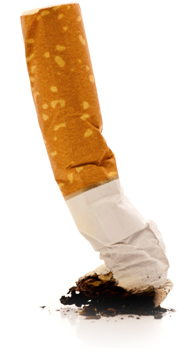 According to Blue Cross Blue Shield Healthy Times Magazine, the following is what happens hours, days, months, and years after you stop smoking:
According to Blue Cross Blue Shield Healthy Times Magazine, the following is what happens hours, days, months, and years after you stop smoking:
After 20 minutes: Your blood pressure and heart rate drop to normal.
After 8 hours: Levels of carbon monoxide in your blood drop and your blood-oxygen level returns to normal.
After 24 hours: Your risk for sudden heart attack, once higher than average, decreases.
After 48 hours: Damaged nerves repair themselves, restoring your sense of taste and smell.
After 2 weeks to 3 months: Blood flow improves throughout your body. Wounds heal more quickly.
After 1 to 9 months: You’ll have more energy and fewer symptoms like coughing, congestion, fatigue, and shortness of breath. Tiny hair-like structures in your lungs called cilia resume clearing mucus, reducing your risk for infections
After 1 year: Your risk for heart disease is cut in half.
After 5 years: Compared to people still smoking a pack a day, you’re half as likely to develop cancer in your mouth, throat, bladder, or esophagus. Your risk for lung cancer falls by nearly 50 percent.
After 10 years: Your risk for stroke and lung cancer is similar to those of someone who never smoked.
After 15 years: You’re no more likely to develop heart disease than if you’d never lit a cigarette.
Not only will you feel better after quitting, you’ll free yourself of “smoker’s cough” and have fewer colds and more energy. Furthermore, physical activities—even those as simple as walking—will be easier. Plus, you’ll reawaken your senses of taste and smell; you won’t develop as many wrinkles; and your teeth will be whiter!
Why not share this with family members and friends who smoke?
Cancer-Fighting Seasonings
Andrew Woodward, Oncology Nutritionist at the Loma Linda University Cancer Center, offers up some tips on easy ways to flavor your food with spices that have cancer-fighting properties.
Used fresh or dry, you can use seasonings to flavor food with less salt and fight cancer at the same time. While research shows that more than 50 seasonings have antioxidant and anti-inflammatory benefits that likely help reduce cancer, here is a list of his top five:
Basil: The volatile oils and polyphenols have antioxidant, anti-inflammatory, antiviral and cancer-fighting properties. Fresh basil leaves can be used in salads, Thai foods, fresh pesto, garnish, Italian foods, and in anything where a green color is desired. Dry basil works well in sauces, marinades, soups and even sprinkled on salad or garlic bread. When the weather is warm, you can buy a mature basil plant for inside the kitchen and pluck off the leaves as needed.
Ginger: Ginger is known for its ability to calm the stomach as well as reduce inflammation. The phytochemical gingerol and others add a pungent and slightly sweet fragrance to foods. Fresh ginger is great for fruit salads, chutney, smoothies, drinks, and teas. Use it in stirfry and Asian cooking, seafood, or in a soy-ginger sauce for asparagus. Candied ginger (start with a small piece) may also reduce nausea and refresh the mouth from the unpleasant taste of medications.
Dill: Both the seeds and the delicate leaves of dill are used for seasoning and also antioxidant and anti-inflammatory properties with cancer-preventive benefits. Milder dill leaves add a wonderful flavor to yogurt dips with cucumber, tomatoes, salads, and seafood.
Cinnamon: The ability of cinnamon extracts to suppress the invitro growth of H. pylori, a recognized risk factor for gastric cancer, gastric mucosa-associated lymphoid tissue lymphoma, and possibly pancreatic cancer, has sparked interest in the potential use of this spice to suppress human cancers. It also has benefits for managing blood-sugar levels. As a spice, cinnamon adds sweetness to fruits, yogurt, smoothies, and teas. It also contributes a tart flavor in stews and Moroccan foods.
Turmeric: The phytochemical curcumin provides at least six separate mechanisms that have tumor fighting properties (antibiotic, anti-angiogenesis, pro-apoptosis, antioxidants, anti-inflammatory and others). Dry turmeric is easy to use or peel the root and use fresh. Turmeric contributes a mild flavor to eggs, beans, lentils, vegetables, and soup as well as adds a golden-yellow color to rice and many other foods.
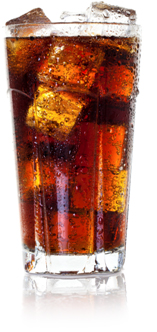 Series: Top 20 Most Common Health Questions
Series: Top 20 Most Common Health Questions
Last summer, we began a series on the top 20 most common health questions (and answers) from Business Insider Magazine. Here is
another question from that list.
Do sugary soft drinks lead to diabetes?
Short answer: Yes. The majority of health research is stacked against sugar-sweetened soda. A 2004 study in the Journal of the American Medical Association found that people who drank one or more sugary drinks per day increased their risk of developing type 2 diabetes by 83 percent compared with those who consumed fewer than one of these beverages per month.

Bob Marckini’s book, “You Can Beat Prostate Cancer And You Don’t Need Surgery To Do It,” is listed in the No. 3 position on a search for “prostate cancer” on Amazon.com (all departments) out of 44,562 search results at the time of this writing. Within the “books” department, the book is listed in the No. 3 position on a search for “prostate cancer” out of 30,011 search results.
The book has 220 reader reviews on Amazon—more than any other book in the top 50!
Here is an excerpt from what one reader recently had to say:

I read this book when a good friend was diagnosed with prostate cancer. By A. Robey “Amer”
I read this book when a good friend was diagnosed with prostate cancer … I immediately got online and found the ProtonBob.com website and from there, I found Bob Marckini’s book. Newly diagnosed men usually weigh a couple of options when considering treatment: side effects
and cure rate. With proton therapy, side effects are generally fewer and less in severity than other radiation therapy side effects as well as surgery, resulting in a better quality of life during and after treatment … After learning all I could about protons, I went back to my friend armed with all of the information I had collected … He took my advice, did his own research, and was treated successfully at Loma Linda University Cancer Center in California—the best of the best in proton treatment centers. One year later, he’s back to the man he used to be—fun-loving, happy and healthy.
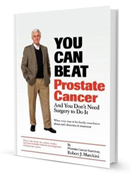 More Information / Where to Buy the Book:
More Information / Where to Buy the Book:
Paperback: $19.00--·--Kindle: $9.99--·--NOOK Book: $9.99--·--Apple iBook: $9.99
All proceeds from book sales help fund BOB efforts and support proton therapy research.
Ask about our bulk discount for paperback books: [email protected].
If you found Bob’s book helpful in making your proton treatment decision, please post a review on Amazon. Once you are logged into your Amazon account, click here and click “Create your own review” button. Don’t forget to rate the book from 1 to 5 stars!

Did You Know?
- Peanut oil is used for cooking in submarines because it doesn’t smoke unless it’s heated above 450F.
- Everything weighs one percent less at the equator.
- The Swine Flu vaccine in 1976 caused more death and illness than the disease it was intended to prevent.
Traveling this Summer?
According to USA Today, vacation airfare is higher on average than last summer (and the summer fares of 2014 were the highest in a decade!). Here’s how to avoid paying more than you have to:
Shop at the right time.
Buy too soon and you’ll pay a mid-range price for airline tickets; buy too late and you’ll pay the expensive business traveler rate. Book tickets within these windows
for the best deals:
- Domestic U.S. fares: three months to one month before departure
- U.S. to Europe fares: five months to three months before departure
Fly ‘around the edges’ of summer.
Avoid big travel plans in late June, all of July, and the first half of August. Instead, traveling during the following periods can save from 10 to 22 percent over peak fares:
- Depart on or before June 15 (June 17 for Europe)
- Depart on or after August 20 (U.S. and Europe)
Fly to cheaper destinations.
If you don’t have a specific trip in mind and just want to get away with the family, consider the following destinations—there are some great deals to be found from many departure cities.
- U.S. cities: Boston, Dallas, Denver, Fort Lauderdale, Miami, Seattle, Washington, D.C.
- European cities: Copenhagen, Dublin, Milan, Oslo, Stockholm
Add some inconvenience to your itinerary.
Compare prices from nearby airports. Bigger airports often have cheaper tickets and if that’s the case, see if it balances out a longer drive from a local airport.
If you don’t mind a long travel day, compare prices between non-stop flights and those with connecting flights. The route that includes a stop or two can be much less expensive.
Travel light.
Checked bags that weigh over 50 pounds usually incur hefty fees. A carry-on is free on most airlines and has another important virtue—since they are always with you, airlines cannot lose them!
Estate Planning Hints: Words of Wisdom
BOB Member Ron Hendricks is Director of Gift Planning for Trinity Western University. He regularly copies us on his “News from Ron” mailings, which are helpful hints to the readers of his newsletters. We have found Ron’s suggestions to be timely and beneficial. With his permission we will periodically be sharing some of his wisdom with our membership. Here is the fourth in this series:
Solution for Creative Spenders
Trusts can be quite useful for protecting children. However, for some children, the trust serves as an additional function: it protects the principal from being rapidly spent by a child. These trusts could be called “spendthrift” trusts. When I visit with retired people in their home they often tell me the story of their children and some of their spending habits. More than once I have heard where of the couple’s three children, two are quite good with financial matters and the third child is very carefree - meaning that if he has money he is very creative in his spending and it is gone in a flash, and then they married someone who was even more creative!
The spendthrift trust allows a parent to protect a certain amount of inheritance. This special trust will need to be managed by a family adviser who serves as trustee and who can make good decisions. The trustee will have the usual power to invest and manage the trust assets. The first important provision for the trustee is his or her power over income and its distribution. Another provision would be the possible distribution of principal, which would be subject to specific requirements, which would meet guidelines that the parents could include in the trust document. Distributions could be as income to the child, for organizations that provide benefits to the child, for education for the child or for other distributions that the parents believe to be appropriate. The trust could be fully distributed when the parents believe the child is at an age when the parents believe the child will be responsible for managing the property.
You can see that there are many ways to protect an inheritance as well as to continue to train and enhance the future of your children.

Last Month’s Brain Teaser
What do the following words have in common?
friend, pastry, portable, remote, varnish
Answer: They all have the letter “r” and if you remove that letter from each word, a new word is formed.
Winner: A pattern is forming. The first to write in with the correct answer is now a four-time brain teaser winner, Chet Sygiel of Jackson, Ky. Chet is getting used to coming in first and continues to offer up his prize to the next in line (does Chet wait by his computer every month?). Thank you, Chet! Interestingly, the second to answer correctly is another repeat winner, George Anderson, Ph.D., of Pleasanton, Calif. George also offered his prize to the next in line.
Third to answer correctly was John Goodger of Surprise, Ariz.—a first-time winner!
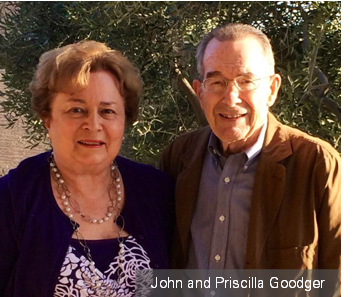 Shortly after retiring from leading hospitality solutions company Agilysys as Vice President, Treasurer in 2000, John was diagnosed with prostate cancer. He was a Gleason 8 and had a PSA of 10. After meeting with six different doctors specializing in six treatment modalities (all of which were said to be the “right treatment”), John and his wife Priscilla found their way to proton therapy.
Shortly after retiring from leading hospitality solutions company Agilysys as Vice President, Treasurer in 2000, John was diagnosed with prostate cancer. He was a Gleason 8 and had a PSA of 10. After meeting with six different doctors specializing in six treatment modalities (all of which were said to be the “right treatment”), John and his wife Priscilla found their way to proton therapy.
John completed a combination of proton and photon treatment at Loma Linda University Cancer Center in July 2002. “The only side effects I had were from the Lupron shots, which ended a year later,” John said. “Life has since returned to normal. Thanks to proton therapy, Priscilla and I were fortunate to celebrate our 50th anniversary by hosting a dinner dance in 2008.”
John told us that experiencing the sunny, warm climate during his treatment in Loma Linda (during the many “side trips” they took during John’s treatment) was instrumental in their deciding to build a home in Sun City Grand, Ariz. “We left the cold Ohio winters behind,” John said.
John’s PSA dropped after treatment and has been stable ever since. John and Priscilla are ardent proponen ts of sharing their positive experience at LLUCC with others. “This has resulted in three men in our neighborhood choosing proton treatment as well as others throughout the country,” John said.
Together, the two enjoy bridge, computers, the world of investments, and spending time outside. Although Priscilla is confined to a walker/wheelchair due to complications from knee-replacement surgeries, they enjoy spending time with their two children and two grandchildren.
John told us he feels “blessed by the good work the BOB does” for its members. He also confessed, “My wife was the one to solve the brain teaser.” That still counts, John!
Congratulations, John (or should we say, congratulations to Priscilla?). Your signed copy of Bob’s book is on the way!
New Brain Teaser
Forward I am heavy, but backward I am not. What am I?
Answer next month: The first to send an email to [email protected] with the correct answer will receive a signed copy of Bob’s book.
Old Dr. Geezer
An old geezer, who had been a retired farmer for a long time, became very bored so he decided to open a medical clinic. He put up a sign outside that read:
Dr. Geezer’s Clinic: Get your treatment for $500. If not cured, get back $1,000.
Doctor Young, who was positive that this old geezer didn’t know beans about medicine, thought this would be a great opportunity to get $1,000, so he went to Dr. Geezer’s clinic. This is what transpired:
Dr. Young: Dr. Geezer, I’ve lost all taste in my mouth. Can you please help me?
Dr. Geezer: Nurse, please bring medicine from box 22 and put 3 drops in Dr. Young’s mouth.
Dr. Young: Aaagh! This is skunk oil!
Dr. Geezer: Congratulations! You’ve gotten your taste back. That’ll be $500.
Dr. Young gets annoyed and goes back after a couple of days of figuring out how to recover his money.
Dr Young: I’ve lost my memory—I can’t remember anything.
Dr. Geezer: Nurse, please bring medicine from box 22 and put 3 drops in the patient’s mouth.
Doctor Young: Oh no you don’t! That’s skunk oil!"
Dr. Geezer: Congratulations! You've gotten your memory back. That’ll be $500.
Dr. Young, after having lost $1,000, leaves angrily and comes back after several more days.
Dr. Young: My eyesight has become weak. I can hardly see!
Dr. Geezer: Well, I don’t have any medicine for that, so here’s your $1,000 back.
Dr. Young: But this is only $500.
Dr. Geezer: Congratulations! You got your vision back! That’ll be $500.
Moral of the story: Just because you’re young, it doesn’t mean you can outsmart an old geezer.
When Love Fades
Last night I was watching TV when I heard my wife’s voice from the kitchen, “What would you like for dinner, my love—chicken, beef or lamb?”
I said, “Thank you, dear. I think I’ll have chicken.”
She replied, “You’re having canned soup, you fool. I was talking to the dog.”

A Simple Gesture
By John W. Schlatter, published in “Chicken Soup for the Soul”
One day, when I was a freshman in high school, I saw a kid from my class was walking home from school. His name was Kyle. It looked like he was carrying all of his books. I thought to myself, “Why would anyone bring home all his books on a Friday? He must really be a nerd.”
I had quite a weekend planned (parties and a football game with my friends), so I shrugged my shoulders and went on. As I was walking, I saw a bunch of kids running toward him. They ran at him, knocking all his books out of his arms and tripping him so he landed in the dirt. His glasses went flying, and I saw them land in the grass about ten feet from him. He looked up and I saw this terrible sadness in his eyes. My heart went out to him. So I jogged over to him, and as he crawled around looking for his glasses, I saw a tear in his eye. As I handed him his glasses, I said, “Those guys are jerks. They really should get lives.” He looked at me and said, “Thanks!” There was a big smile on his face. It was one of those smiles that showed real gratitude.
I helped him pick up his books, and asked him where he lived. As it turned out, he lived near me, so I asked him why I had never seen him before. He said he had gone to private school before now. I would have never hung out with a private school kid before. We talked all the way home, and I carried some of his books. He turned out to be a pretty cool kid. I asked him if he wanted to play a little football with my friends. He said yes.
We hung out all weekend and the more I got to know Kyle, the more I liked him, and my friends thought the same of him. Monday morning came, and there was Kyle with the huge stack of books again. I stopped him and said, “Boy, you are gonna really build some serious muscles with this pile of books everyday!” He just laughed and handed me half the books.
Over the next four years, Kyle and I became best friends. When we were seniors, we began to think about college. Kyle decided on Georgetown, and I was going to Duke. I knew that we would always be friends, that the miles would never be a problem. He was going to be a doctor, and I was going for business on a football scholarship.
Kyle was valedictorian of our class. I teased him all the time about being a nerd. He had to prepare a speech for graduation. I was so glad it wasn’t me having to get up there and speak. Graduation day, I saw Kyle. He looked great. He was one of those guys that really found himself during high school. He filled out and actually looked good in glasses. He had more dates than I had and all the girls loved him. Boy, sometimes I was jealous. Today was one of those days. I could see that he was nervous about his speech. So, I smacked him on the back and said, “Hey, big guy, you’ll be great!” He looked at me with one of those looks (the really grateful one) and smiled. “Thanks,” he said.
As he started his speech, he cleared his throat, and began. “Graduation is a time to thank those who helped you make it through those tough years. Your parents, your teachers, your siblings, maybe a coach … but mostly your friends … I am here to tell all of you that being a friend to someone is the best gift you can give them. I am going to tell you a story.” I just looked at my friend with disbelief as he told the story of the first day we met.
He had planned to kill himself over the weekend. He talked of how he had cleaned out his locker so his Mom wouldn’t have to do it later and was carrying his stuff home. He looked hard at me and gave me a little smile. “Thankfully, I was saved. My friend saved me from doing the unspeakable.” I heard the gasp go through the crowd as this handsome, popular boy told us all about his weakest moment. I saw his mom and dad looking at me and smiling that same grateful smile. Not until that moment did I realize its depth.
Never underestimate the power of your actions. With one small gesture you can change a person’s life … for better or for worse. God puts us all in each other’s lives to impact one another in some way. Look for God in others.
Quote of the Month:
‘Words of comfort, skillfully administered, are the oldest therapy known to man.’ ―Louis Nizer
Low PSAs to all,
Bob Marckini and Deb Hickey
To print the BOB Tales newsletter or view the newsletter with a larger font size, click here for the PDF file.
NO MEDICAL ADVICE: Material appearing here represents opinions offered by non-medically-trained laypersons. Comments shown here should NEVER be interpreted as specific medical advice and must be used only as background information when consulting with a qualified medical professional.


.jpg)
